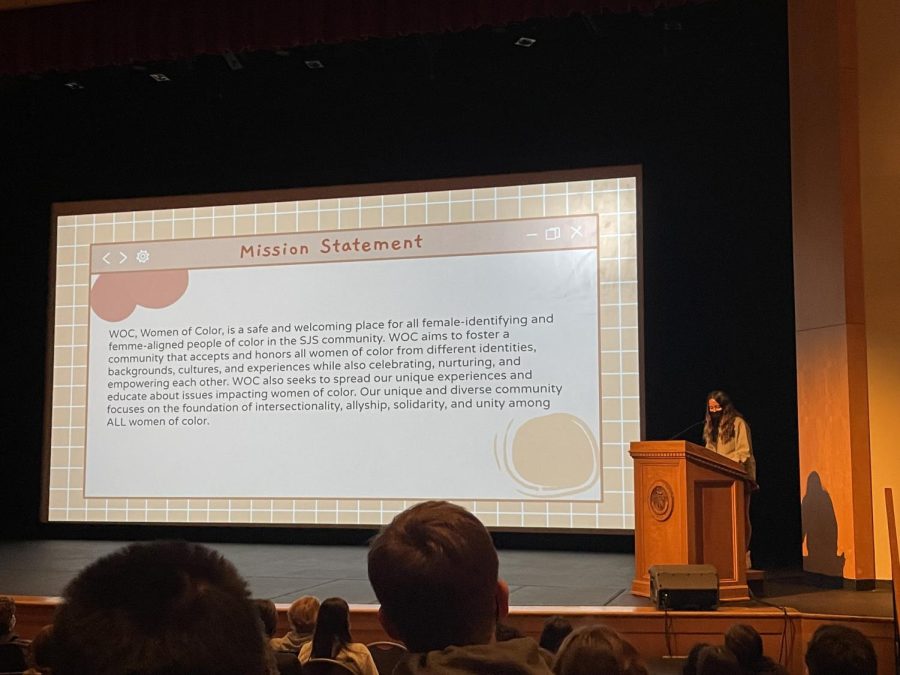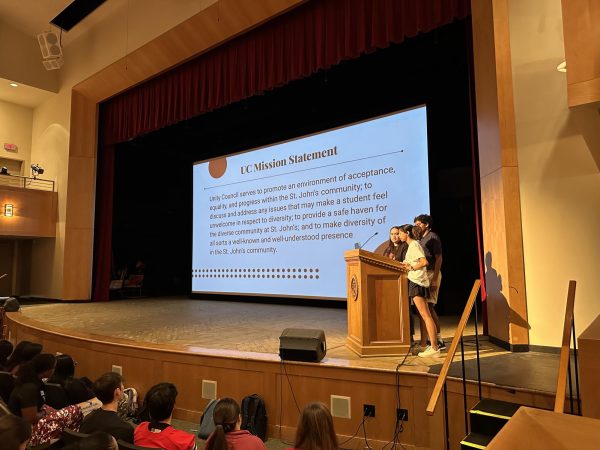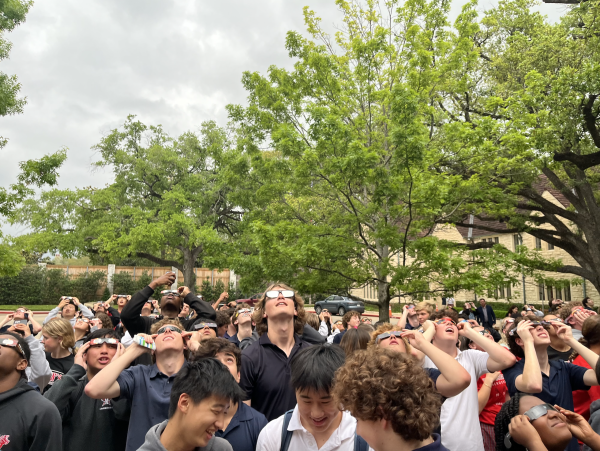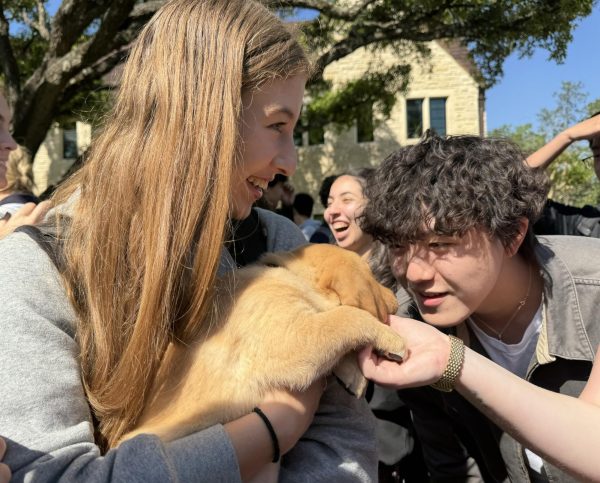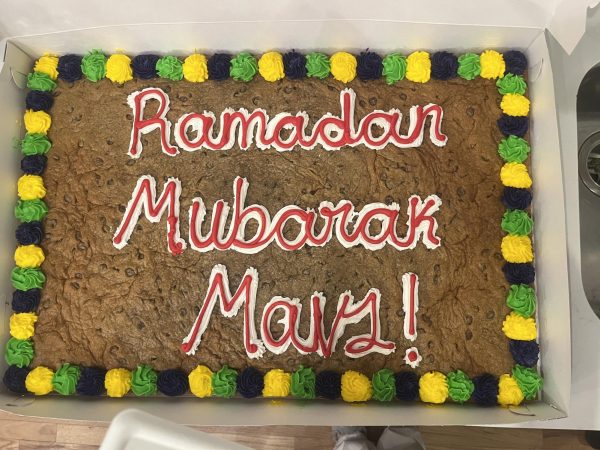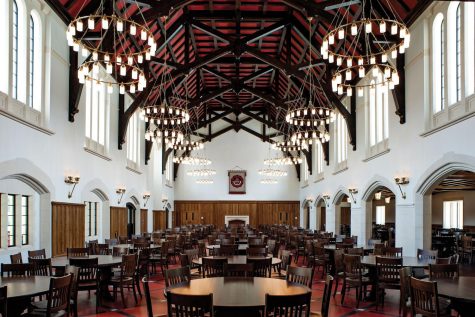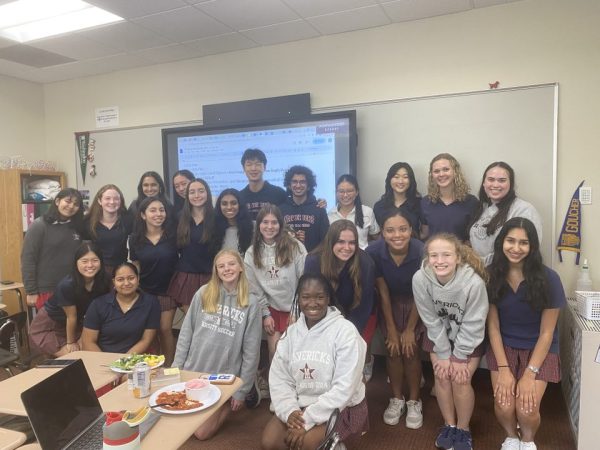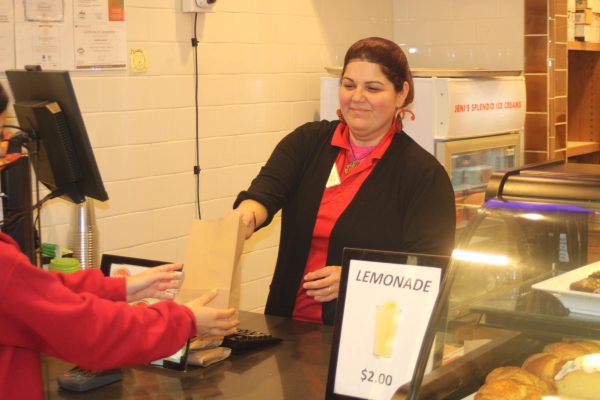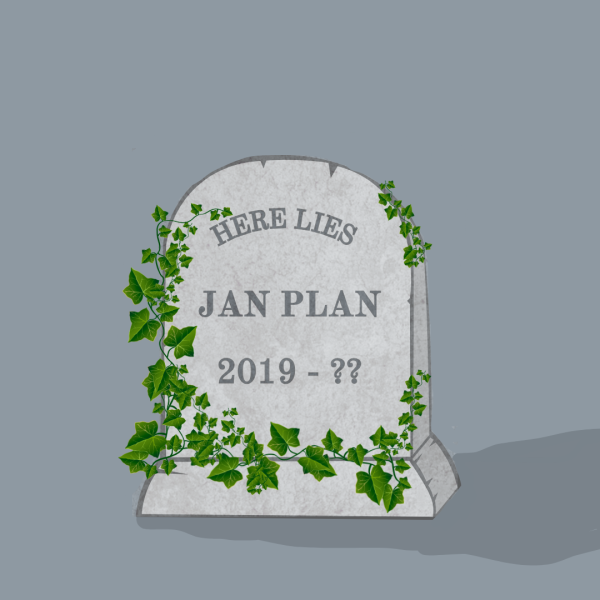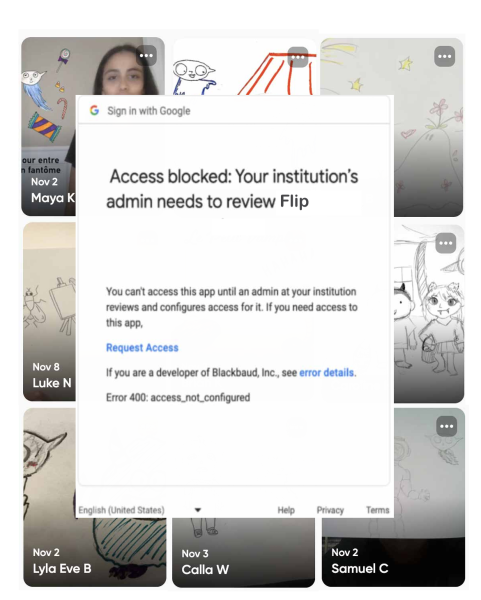Christy Haubegger (‘86) discusses representation in pop culture at WOC assembly
Junior Ananya Das reads WOC’s mission statement at the beginning of the assembly.
Christy Haubegger (‘86) remembers the exact street corner in New York City where she saw the first issue of “Latina” magazine, her brainchild years in the making. When she saw that first issue, she understood the impact of having “a different kind of face” on a magazine cover. Sitting on a stand next to tens of Eurocentric magazines, “Latina” was bound to get the attention of people who had never even seen a Latina prominently featured in the media.
She thought it was the finish line, but it was only the beginning. Since then, Haubegger has made it her life’s work to create opportunities for women of color to tell their stories in the media.
On Jan. 10, in an assembly organized by the Women of Color affinity group, she spoke to the Upper School about her experience with Eurocentric beauty standards. Through a recorded Zoom conversation with senior WOC Presidents Indrani Maitra and Ella Chen, Haubegger discussed her upbringing as a Latina woman adopted by a white family, her experience at St. John’s, her career in media and her encounters with Eurocentric beauty standards.
In 1996, Haubegger founded “Latina,” a magazine that aimed to provide women with Hispanic American role models. The first issue featured Jennifer Lopez on the cover.
“We launched in 1996 with a woman on the cover that we thought might be the next big thing—Jennifer Lopez,” Haubegger said “We got that part right.”
Newsweek named Haubegger one of the “Women of the New Century” in 2001 for her impact as the creator of “Latina.” She has worked on the big screen as an executive producer on “Spanglish” and has met influential women like Shakira and Malala Yousafzai. Haubegger now works as the Chief Inclusion Officer at Warner Media.
While Haubegger acknowledges the strides the school has made in terms of diversity and inclusion, she believes there is still room for improvement.
“I grew up in Houston, which is a very diverse place, and I’d gone to public school with a lot of people who looked like I did, until I got to high school,” she said.
When she was in high school, she loved beauty magazines such as “Seventeen,” but they always left her feeling unattractive and left out.
“I remember being challenged by that and thinking I was never going to be beautiful, no matter what my parents said,” she said. She cannot imagine growing up and seeing Eurocentric standards perpetuated in the era of social media.
Haubegger’s experiences and accomplishments resonated with women of color at St. John’s. Aiman has her own “VOGUE” wall, a space to showcase issues of the magazine.
“I definitely care a lot about representation in pop culture and media,” senior Eliot Aiman said.
Aiman, whose dream is to become an entrepreneur, might want to start her own magazine someday.
“It was really grounding in who I want to become and where my educational experience can take me,” she said.
Senior Kennedy Black has seen a persistent version of the racism Haubegger experienced at St. John’s. Teachers have tried to touch her hair before, and classmates have made snide comments to her in the past.
“It’s a bit dramatic to say that Eurocentric beauty standards have been the bane of my existence, but they’ve definitely played a serious role in my life,” she said.
Junior WOC leader Ananya Das has noticed that the issue of Eurocentric beauty standards frequently slips under the radar. Das, who has wished for lighter eyes and hair in the past, relates to Haubegger. She believes that more educational initiatives are essential to addressing the issues that women of colors face.
Das hopes that the assembly encourages students to leave the assembly wanting to talk about women of colors’ experiences. She hopes people will recognize their own biases toward women of color.
“Eurocentric beauty standards are the standard, and no one really questions it,” Das said. “I want people to start questioning their perceptions of beauty.
Junior Veda Chilakapati hopes to educate the SJS community about unconscious bias, a stereotype about a group of people.
“We want to make a safe haven for women of color in the St. John’s community and educate others,” Chilakapati said.
WOC aims to provide that safe space for women of color by hosting forums, posting resources on their Instagram and inviting speakers like Haubegger to educate the community on social issues. The affinity group was created when Eliot Aiman was a freshman.
“It’s awesome for me, but it’s also indicative of the fact that it hasn’t been around for a long time,” she said.
Chilakapati has noticed that almost all of the students who attend forums hosted by WOC are women of color themselves. She wants more allies to join women of color at these events in the future.
“Part of this affinity group is to spread awareness about a really vulnerable demographic at the intersection of racism and sexism,” senior WOC leader Indrani Maitra said.
The WOC assembly allowed the affinity group to reach a larger audience, including people who wouldn’t normally attend forums.
“It’s always really great to work hard putting on a forum, and see people who aren’t women of color, and you know that they want to learn,” she said.
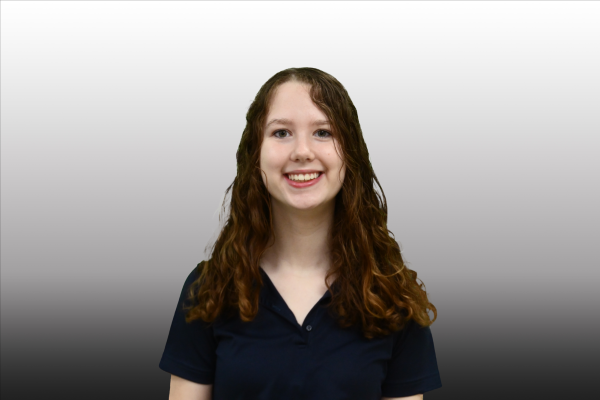
Lily Feather ('25) joined The Review in 2021 as a freshman. Though she does not work for The Independent, she wishes she had the "cool journalist" vibe...
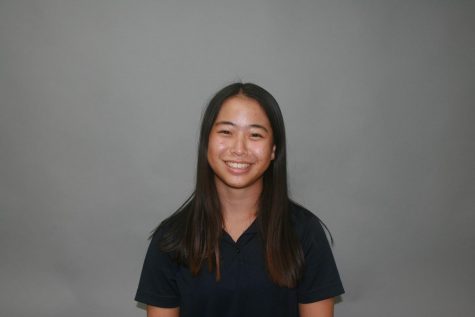
Ashley is a senior in her fourth year on The Review. She enjoys playing golf, baking and, to be honest, does not remember the sleep assembly.



